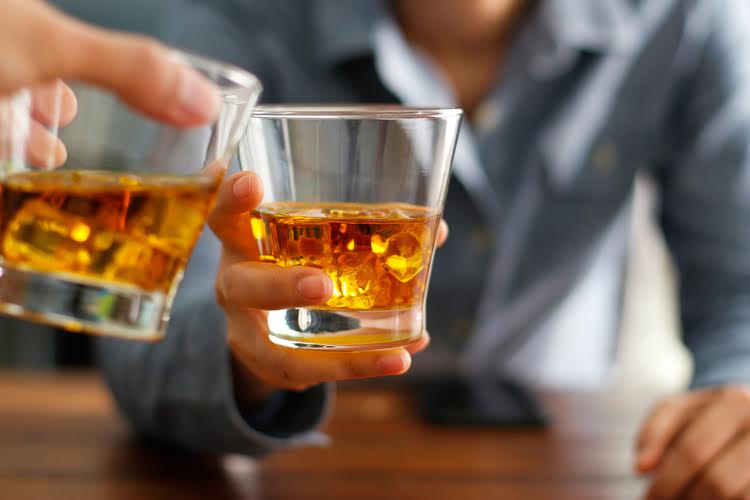Substance abuse relapse occurs when a person who has attempted to stop using a substance begins to use it again. Relapse can occur very soon after attempting sobriety, or after several years of sustained sobriety. If the temptation to use again becomes too overwhelming, don’t hesitate to seek professional help. Certified addiction specialists can guide your recovery and relapse prevention journey.
Relapse Prevention Strategies and Techniques for Addiction
The relationship between self-efficacy and relapse is possibly bidirectional, meaning that individuals who are more successful report greater self-efficacy and individuals who have lapsed report lower self-efficacy4. Chronic stressors may also overlap between self-efficacy and other areas of intrapersonal determinants, like emotional states, by presenting more adaptational strain on the treatment-seeking client4. Lapses (a one-time return to addictive behavior) and relapses (a return to an addictive lifestyle) do occur. Some people relapse several times before new behavior becomes a regular part of their lives. Thus, it is important to learn about and use relapse prevention techniques.
Relapse Prevention: How To Create A Relapse Prevention Plan
Twelve-step groups include Alcoholics Anonymous (AA), Narcotics Anonymous (NA), Marijuana Anonymous (MA), Cocaine Anonymous (CA), Gamblers Anonymous (GA), and Adult Children of Alcoholics (ACA). Every country, every town, and almost every cruise ship has a 12-step meeting. There are other self-help groups, https://www.fstructures.com/2007/08/ including Women for Sobriety, Secular Organizations for Sobriety, Smart Recovery, and Caduceus groups for health professionals. It has been shown that the way to get the most out of 12-step groups is to attend meetings regularly, have a sponsor, read 12-step materials, and have a goal of abstinence [24,25].

Careers – Join Our Team

Understanding relapse is crucial in the context of addiction recovery. It involves recognising that relapse is not a single isolated event but a multifaceted process, often comprising emotional triggers, mental struggles, and, eventually, a return to substance use. By comprehending these various stages, individuals in recovery can gain insight into the warning signs and vulnerabilities that may lead to relapse, enabling them to address these issues before they escalate proactively. This awareness empowers individuals to develop effective strategies for relapse prevention, ultimately improving their chances of maintaining long-term sobriety. Individuals recovering from various forms of addiction frequently encounter relapses that have gained acceptance as an almost inevitable part of the recovery process.
Relapse Prevention is considered among the most important clinical innovations in the substance use disorder treatment and recovery field, and continues to be one of the most widely practiced. When clinicians and scientists refer generally to CBT for substance use disorder, it is often Marlatt’s RP model or some related approach to which they are referring. RP clinical protocols typically include 12 weekly sessions, and are empirically supported when delivered over that time frame.
Manage withdrawal symptoms
The Modern Network was born from the passion and personal experience of its founders. We understand the real-world challenges of mental healthconditions and are here to help and we are passionate about helping our clients lead balanced, healthy, and fulfilling lives. Having an action plan in place can help you quickly respond if you feel a relapse might occur.
Emotional relapse
- Mindfulness-Based Relapse Prevention (MBRP) is a novel treatment approach integrating cognitive-behavioral relapse prevention strategies with mindfulness meditation.
- If you’d like to learn more about mindfulness-based cognitive therapy or relapse prevention techniques, you can always reach out to a recovery expert for guided instruction.
- Support groups also let participants collectively learn from substance abuse group topics.
- Therefore, it is important that patients understand that recovery is not an event or a time-limited goal; rather, it is a series of changes across multiple domains of life that need to be maintained lifelong.
Some researchers divide physical relapse into a “lapse” (the initial drink or drug use) and a “relapse” (a return to uncontrolled using) [8]. Clinical experience has shown that when clients focus too strongly on how much they used during a lapse, they do not fully appreciate the consequences of one drink. Once an individual has had one http://chudinov.ru/etruskologiya/ drink or one drug use, it may quickly lead to a relapse of uncontrolled using. But more importantly, it usually will lead to a mental relapse of obsessive or uncontrolled thinking about using, which eventually can lead to physical relapse. In bargaining, individuals start to think of scenarios in which it would be acceptable to use.
- These inner enemies come armed with deceptive allure, masquerading as friends or saviors, promising relief, pleasure, or escape.
- Relapse prevention is a skill that takes dedication and following relapse prevention strategies.
- Participants in this stage may be at a significantly increased risk of a physical relapse during special times, such as a social event, holiday, or a trip when they may use mental bargaining to justify their use.
- Most alcohol and drug treatment centers educate clients on relapse prevention techniques and help clients learn them in order to maintain recovery and achieve short- and long-term goals.
- In the second stage of recovery, the main task is to repair the damage caused by addiction [2].
- Occasional, brief thoughts of using are normal in early recovery and are different from mental relapse.
- Whereas before we responded to the mortgage payment with drinking or irritability, we would now replace it with a new routine like calling our sponsor or going for a run.
- The Relapse Prevention Plan worksheet provides a bare-bones structure for creating such a plan.
- They must also overcome the guilt and negative self-labeling that evolved during addiction.
Many researchers define relapse as a process rather than as a discrete event and thus attempt to characterize the factors contributing to relapse3. Miller and Hester reviewed more than 500 alcoholism outcome studies and reported that more than 75% of subjects relapsed within 1 year of treatment1. A study published by Hunt and colleagues demonstrated that nicotine, heroin, and alcohol produced highly similar rates of relapse over a one-year period, in the range of 80-95%2.
If you’d like to learn more about mindfulness-based cognitive therapy or relapse prevention techniques, you can always reach out to a recovery expert for guided instruction. The following real-life scenarios showcase how individuals in recovery can effectively apply relapse prevention techniques to stay on their path of sobriety. Relapse prevention https://stalkeruz.com/ten-chernobylya/kto-znaet-paskhalki-i-prikoly-v-stalkere.html?page=2 exercises are structured activities aimed at reinforcing relapse prevention techniques. They offer a more practical, hands-on approach to understanding and managing potential triggers or high-risk situations. According to a review of relapse prevention, lapse and relapse are particularly common within the first year of seeking treatment.
